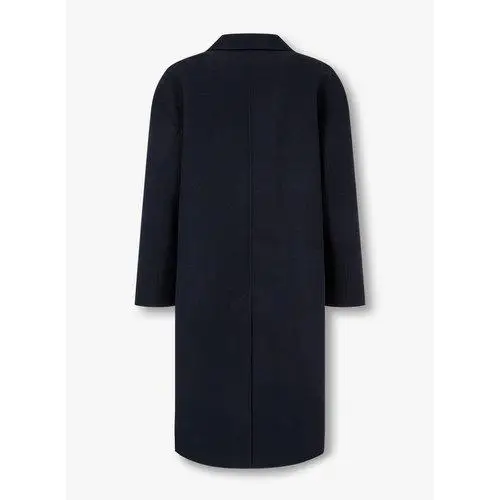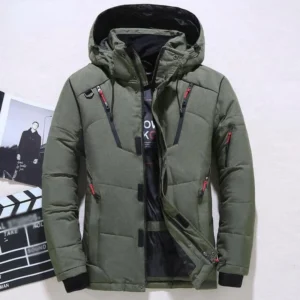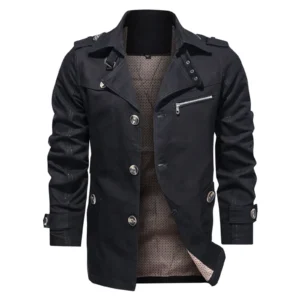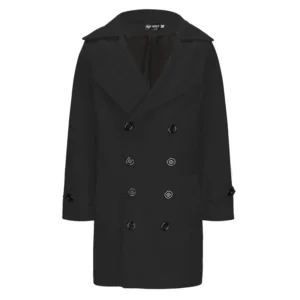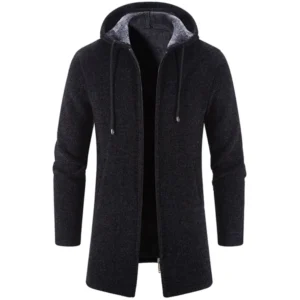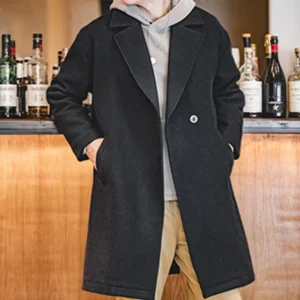Understanding the Power of Wool Coats in Winter Wardrobes
When winter winds howl and temperatures plummet, a premium wool coat stands as both shield and style statement. Unlike synthetic alternatives, wool naturally excels at temperature regulation—trapping warm air close to your body while allowing moisture to escape. This remarkable fiber has protected humans from harsh elements for centuries, offering unmatched insulation even when damp.
What truly sets quality wool outerwear apart is its remarkable versatility. The right wool coat transitions seamlessly between casual weekend outings and formal business settings, adapting to nearly any dress code with simple styling adjustments. While the initial investment might exceed other materials, wool’s exceptional durability means a well-crafted coat can serve you faithfully for decades rather than seasons.
The natural resilience of wool fibers allows them to bend up to 20,000 times before breaking (compared to cotton’s 3,000), explaining why properly maintained wool coats often become cherished heirlooms. This innate strength, combined with wool’s resistance to wrinkles and stains, makes it the ideal foundation for a thoughtful winter wardrobe.
In the following sections, we’ll explore how to select, style, and care for these remarkable garments. From understanding proper coat length for wool outerwear to mastering layering techniques, this guide offers everything you need to navigate winter with confidence and sophistication. Begin your journey into refined cold-weather style by exploring our curated selection of premium wool coats designed for the discerning modern man.
Classic Wool Coat Styles Every Man Should Know
Before mastering wool coat styling, you should understand the distinct personalities of classic styles. Each design carries its own heritage and purpose, influencing how and where it’s best worn.
The Chesterfield
- Single-breasted design with concealed buttons
- Clean, minimalist appearance with little ornamentation
- Often features a velvet collar for subtle luxury
- Typically cut with straight lines for a refined silhouette
- Ideal for formal settings and business environments
The Peacoat
- Naval heritage with characteristic shorter length
- Double-breasted front with large buttons
- Wide lapels that can be turned up against wind
- Dense melton wool construction for superior warmth
- Versatile for both casual and smart-casual settings
The Car Coat
- Mid-thigh length designed for comfortable driving
- Typically single-breasted with simple closure
- Straight cut allowing freedom of movement
- Often features practical patch pockets
- Perfect for everyday wear and active urban lifestyles
The Duffle Coat
- Distinctive toggle closures (traditionally horn)
- Attached hood for additional weather protection
- Relaxed fit accommodating heavier layers
- Often features shoulder yokes for water resistance
- Bridges the gap between casual and smart-casual
The Overcoat
- Longer design reaching below the knee
- Cut generously to fit comfortably over suits
- Structured shoulders providing formal silhouette
- Available in single or double-breasted styles
- The ultimate companion for formal attire and evening wear
The Topcoat
- Lighter construction than standard overcoats
- Mid-thigh to knee length
- Cleaner lines with minimal detailing
- Ideal for milder winter days or transitional seasons
- Easily adapts from business to evening settings
Understanding these fundamental styles provides the foundation for building a versatile winter wardrobe. When exploring different overcoat styles, consider how each silhouette complements your existing wardrobe and lifestyle needs. The right choice often depends on your typical activities and how length varies across wool coat styles, with longer options offering greater warmth and formality while shorter styles provide improved mobility.
Deciphering Wool Quality: What Makes a Superior Coat
Not all wool coats are created equal. Understanding the materials that comprise your investment piece helps ensure you’re getting genuine quality and performance.
When examining labels, look beyond the simple “wool” designation to understand what you’re truly getting. Pure wool coats (100% wool) offer maximum insulation and breathability, while blends incorporate synthetic fibers like polyester or nylon—sometimes improving durability and reducing cost, but potentially sacrificing some natural benefits.
Premium Wool Varieties
| Wool Type | Characteristics | Best For | Temperature Performance |
|---|---|---|---|
| Merino | Ultra-fine, soft fibers with excellent drape | Lightweight elegant coats, closest layer to skin | Moderate to cold conditions |
| Lambswool | Soft yet durable with natural elasticity | Versatile everyday coats | Moderate to very cold conditions |
| Melton | Tightly woven, dense construction with wind resistance | Military-inspired styles, peacoats | Very cold and windy conditions |
| Cashmere-Wool Blend | Exceptional softness with improved warmth-to-weight ratio | Luxury overcoats and formal wear | Moderate to cold conditions |
Quality construction reveals itself through attention to detail. Examine the stitching along seams—tight, even stitches indicate careful craftsmanship. Premium wool coats typically feature full canvas construction rather than fused linings, creating a garment that molds to your body over time.
The lining material significantly impacts both comfort and longevity. Silk or satin linings offer luxurious comfort and ease of movement, while Bemberg (cupro) provides breathability with durability. Quality wool coats often feature sleeve linings made from hardier materials than body linings to withstand friction.
Understanding these distinctions helps you make informed decisions when investing in premium outerwear. For versatile options suited to various climates and style preferences, explore our selection of wool blend options for different needs. For those debating between pure wool and blended options, our guide on comparing pure wool vs blended options offers deeper insights into which might better suit your specific requirements.
Mastering the Perfect Fit: Essential Guidelines
The most luxurious wool coat will fail you if it doesn’t fit properly. Proper fit not only enhances appearance but also optimizes insulation and comfort through winter’s harshest days.
Fit Checklist: What to Look For
- Shoulders: The seam should align precisely with your natural shoulder edge—neither extending beyond nor falling short
- Chest: When buttoned, you should be able to slide a flat hand comfortably inside the coat without tightness
- Sleeve Length: Ideally extends to where your wrist meets your hand, showing ¼ to ½ inch of suit jacket sleeve
- Body Length: Varies by style, but should generally cover any garments worn underneath
- Collar: Should sit flat against your neck without gapping or bunching when fully buttoned
- Mobility: You should be able to cross your arms comfortably without extreme pulling
When trying on a wool coat, always wear similar layers to what you’ll typically have underneath. This ensures you’ll have proper room for sweaters or suit jackets without compromising movement.
Common fit mistakes include choosing a coat that’s too large (creating a shapeless appearance) or too small (restricting movement and preventing proper layering). Remember that slight alterations can transform a good coat into a perfect one—sleeve length, button position, and waist suppression can typically be adjusted by a skilled tailor.
For most men, the most flattering and functional coat length falls between mid-thigh and just above the knee, though this varies with height and proportion. Finding your ideal coat length for winter wear ensures both visual harmony and practical protection from the elements. A properly fitted wool coat becomes not just a winter necessity but a defining element of your personal style.
The Art of Layering: Building Warmth Without Bulk

Mastering strategic layering transforms your wool coat from mere outerwear into a sophisticated climate control system. The goal is maximizing warmth while maintaining a refined silhouette—no easy feat in bitter temperatures.
Start with a foundation layer that sits close to the skin. Opt for lightweight merino wool or technical fabrics that wick moisture away from your body. Cotton undershirts trap dampness and quickly lose insulating properties, making them poor choices for genuine cold.
The mid-layer provides your primary insulation. Depending on temperature and formality requirements, this might be:
* Lightweight merino sweater (30-40°F/-1-4°C)
* Cashmere turtleneck (20-30°F/-7 to -1°C)
* Wool cardigan or vest (15-25°F/-9 to -4°C)
* Down vest or lightweight technical mid-layer (below 15°F/-9°C)
For formal settings, a suit jacket serves as an excellent mid-layer beneath an overcoat, providing structured warmth without compromising sophistication. In casual contexts, thinner multiple layers often outperform a single thick one, creating insulating air pockets between garments.
Pay special attention to potential bulk points—shoulders, upper arms, and chest. These areas must accommodate movement without distorting your coat’s clean lines. When layering, progressively increase garment size from base to outer layer, ensuring each piece fits comfortably over what’s beneath it.
Material combinations matter significantly. Smooth fabrics slide easily over each other, preventing bunching and maintaining mobility. The remarkable versatility of wool overcoats designed for effective layering lies in their ability to accommodate various underlayers while maintaining their elegant shape and proportions.
Casual Cool: Everyday Wool Coat Ensembles
Wool coats aren’t reserved for formal occasions—they elevate everyday attire with minimal effort. Here are four versatile casual outfits built around quality wool outerwear:
Weekend Warrior
- Foundation: Classic navy peacoat with anchor buttons
- Layer: Chunky fisherman’s sweater in cream or oatmeal
- Bottom: Dark indigo selvedge denim with minimal distressing
- Footwear: Brown leather boots with commando sole
- Accessories: Merino watch cap, leather gloves, casual leather watch
- Why it works: The peacoat’s maritime heritage pairs naturally with rugged textures while maintaining a refined appearance
Smart Casual Sophistication
- Foundation: Camel car coat with simple horn buttons
- Layer: Burgundy merino quarter-zip over white oxford cloth button-down
- Bottom: Olive green chinos with slight taper
- Footwear: Minimalist leather sneakers in white or light tan
- Accessories: Cashmere scarf in complementary pattern, leather portfolio
- Why it works: The warm camel creates a sophisticated neutral backdrop for subtle color play
Urban Explorer
- Foundation: Charcoal duffle coat with genuine horn toggles
- Layer: Red and black buffalo plaid flannel shirt
- Bottom: Brown corduroy pants with relaxed fit
- Footwear: Waterproof hiking boots in earth tones
- Accessories: Leather gloves, wool beanie, field watch
- Why it works: The rugged duffle silhouette harmonizes with outdoor-inspired elements
Elevated Athleisure
- Foundation: Light gray topcoat with minimal structure
- Layer: Navy cashmere hoodie (no logos or graphics)
- Bottom: Charcoal tapered joggers in wool blend or technical fabric
- Footwear: Premium minimalist sneakers in white or gray
- Accessories: Simple knit beanie, leather weekend bag
- Why it works: The structured coat adds sophistication to comfort-focused pieces
The versatility of wool pea coats makes them particularly valuable for casual styling, offering rugged practicality without sacrificing style. When developing your personal casual coat collection, consider how choosing between coat lengths for casual looks impacts your overall silhouette and style impression.
Professional Polish: Wool Coat Styling for the Workplace

A well-chosen wool coat completes your professional appearance while providing necessary protection from winter elements. Different workplace environments call for distinct approaches:
The Executive Ensemble
- Foundation: Charcoal or navy Chesterfield coat in fine wool
- Layer: Matching dark suit with subtle pinstripe or solid pattern
- Underpinning: Crisp white or pale blue dress shirt with French cuffs
- Footwear: Black cap-toe oxfords, highly polished
- Accessories: Silk tie in burgundy or deep blue, white pocket square, leather gloves
- Styling note: Keep patterns subtle and complementary—if your suit features pinstripes, choose a solid tie, or vice versa
Business Casual Mastery
- Foundation: Camel topcoat in cashmere-wool blend
- Layer: Navy blazer over fine-gauge sweater in burgundy or forest green
- Bottom: Charcoal or medium gray flannel trousers
- Footwear: Brown derby shoes or brogues
- Accessories: Patterned pocket square, leather portfolio or briefcase
- Styling note: Create subtle color harmony by picking up undertones from your primary pieces
Creative Professional Look
- Foundation: Textured herringbone overcoat in gray or brown
- Layer: Charcoal or navy turtleneck sweater in fine merino
- Bottom: Tailored trousers in complementary neutral tone
- Footwear: Chelsea boots in suede or leather
- Accessories: Patterned scarf, minimalist watch, leather messenger bag
- Styling note: Let texture rather than bold color create visual interest
Tech-Sector Refinement
- Foundation: Navy car coat in wool-blend
- Layer: Light blue quarter-zip merino sweater over button-down shirt
- Bottom: Well-fitted chinos in khaki or olive
- Footwear: Leather chukka boots or minimal leather sneakers
- Accessories: Simple leather belt, casual watch, tech-friendly messenger bag
- Styling note: Balance comfort with refinement through clean lines and quality materials
Professional environments often demand longer coat styles that fully cover suit jackets and blazers. Our collection of professional-length wool coats provides options designed specifically for business settings. When selecting outerwear for professional contexts, understanding the benefits of wool overcoats for professional wear helps ensure you make choices that enhance both comfort and career image.
Evening and Special Occasions: Elevated Wool Coat Styling
Special events demand outerwear that enhances rather than merely complements your ensemble. Your wool coat becomes an integral component of your overall presentation, setting the tone before you even enter the venue.
Fine Dining Attire
- Foundation: Black or midnight blue overcoat in luxurious wool
- Layer: Formal dinner suit or dark well-tailored suit
- Underpinning: Crisp white dress shirt with appropriate collar
- Footwear: Highly polished black oxfords or formal shoes
- Accessories: Minimal, elegant pieces—perhaps only a white pocket square or subtle cufflinks
- Styling principle: Embrace understated sophistication with impeccable fit and pristine finishing
Cultural Events
- Foundation: Textured wool overcoat in rich tone (burgundy, forest green, or camel)
- Layer: Fine-gauge turtleneck or mock neck sweater
- Bottom: Tailored wool trousers in complementary neutral
- Footwear: Leather dress boots or refined derbies
- Accessories: Artistic pocket square, minimalist leather gloves
- Styling principle: Balance sophistication with subtle creative expression
Festive Gatherings
- Foundation: Charcoal or navy textured wool coat
- Layer: Cashmere sweater in seasonal color over button-down
- Bottom: Dark well-fitted trousers
- Footwear: Polished leather shoes or refined boots
- Accessories: Patterned scarf, leather gloves, subtle holiday accent (tasteful pocket square or tie)
- Styling principle: Incorporate seasonal touches while maintaining overall refinement
Date Night Refinement
- Foundation: Well-fitted topcoat in flattering neutral
- Layer: Knit blazer or unstructured sport coat over fine layer
- Bottom: Dark jeans or tailored trousers
- Footwear: Clean chelsea boots or polished dress shoes
- Accessories: Quality timepiece, subtle cologne, leather gloves
- Styling principle: Project confidence through thoughtful coordination rather than flashy statements
Mens Big and Tall Winter Coats, Mens Down Coat, Mens Hooded Winter Coat, Mens Puffer Coat
Price range: $126.44 through $217.01 Select options This product has multiple variants. The options may be chosen on the product pageMens Big and Tall Winter Coats, Mens Hooded Winter Coat
Price range: $80.32 through $106.68 Select options This product has multiple variants. The options may be chosen on the product pageMens Double Breasted Pea Coat, Mens Wool Blend Coat, Mens Wool Pea Coat
Price range: $136.84 through $157.36 Select options This product has multiple variants. The options may be chosen on the product pageMens Cashmere Overcoat, Mens Hooded Winter Coat, Mens Wool Blend Coat
Price range: $128.72 through $139.68 Select options This product has multiple variants. The options may be chosen on the product pageMens Hooded Winter Coat, Mens Insulated Coat, Mens Puffer Coat, Mens Quilted Coat
Price range: $139.88 through $177.72 Select options This product has multiple variants. The options may be chosen on the product pageMens Black Overcoat, Mens Black Wool Coat, Mens Wool Overcoat
$339.18 Select options This product has multiple variants. The options may be chosen on the product page
For these significant occasions, consider investing in elegant wool dress coats for special occasions that provide both impressive aesthetics and necessary protection from winter elements. The right coat doesn’t just complete your look—it elevates it, creating a memorable first impression that sets the tone for the entire evening.
Weather-Specific Adaptations: Conquering Different Winter Conditions
Even the finest wool coat requires strategic adaptation to handle winter’s diverse challenges. Here’s how to modify your approach for specific conditions:
Light Rain and Drizzle
- Apply quality water-repellent spray designed specifically for wool (reapply seasonally)
- Carry a compact umbrella for unexpected downpours
- Choose darker wool colors that show water spots less prominently
- Avoid heavy saturation—wool can absorb up to 30% of its weight in moisture before feeling wet
- Allow thorough drying at room temperature before storing
Snow and Sleet
- Increase base layer insulation, as wet conditions accelerate body heat loss
- Choose wool coats with tighter weaves (melton wool excels here)
- Consider scarves that can be wrapped to protect the coat’s collar and neck opening
- Select boots with proper traction and water resistance
- Brush off snow promptly before it melts into the wool
Extreme Cold (Below 15°F/-9°C)
- Add an ultra-thin down vest or jacket between mid-layer and coat
- Focus on protecting high heat-loss areas: neck, wrists, ankles
- Consider thermal underlayers in lightweight performance fabrics
- Select coat styles with higher collars or neck closures
- Combine with technical winter accessories (thermal gloves, insulated hat)
Windy Conditions
- Opt for denser wool weaves that block air penetration
- Choose double-breasted styles for additional front coverage
- Ensure proper button or closure alignment to prevent gaps
- Add a wind-blocking scarf strategically wrapped
- Consider styles with adjustable cuffs or button sleeves
For particularly challenging environments, you may need to supplement wool coats for extreme conditions with additional specialized gear. Remember that wool’s natural properties make it remarkably adaptable—it insulates even when damp and regulates temperature across a broad range of conditions.
Strategic Accessories: Completing Your Wool Coat Look
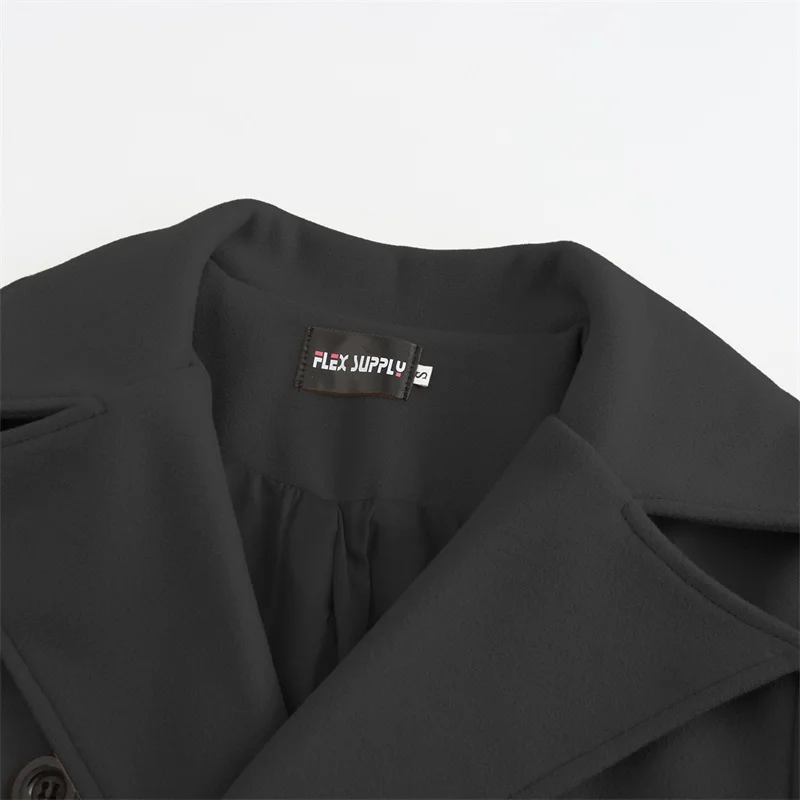
Thoughtfully chosen accessories transform a good outfit into a great one while providing crucial functional benefits during winter months.
Scarves: The Versatile Enhancer
- Material pairing: Match texture weight to your coat (lighter cashmere with finer wools, chunky knits with rugged coat styles)
- Length guidance: 60-70 inches for maximum versatility
- Styling options:
- Classic drape: Simple and sophisticated for formal settings
- Once around: Balanced protection and visual appeal
- Parisian knot: Secure and elegant for windy conditions
- Color strategy: Either complement your coat with subtle tonal variation or create controlled contrast with a complementary hue
Gloves: Practical Sophistication
- Formal settings: Fine leather gloves in black or brown with minimal detailing
- Business contexts: Leather gloves with cashmere lining in colors matching your coat
- Casual situations: Textured leather, suede, or quality knit gloves
- Material considerations: Deerskin and peccary offer superior flexibility and warmth
- Fit note: Properly sized gloves should fit snugly without restricting movement
Headwear: Balanced Protection
- Formal overcoats: Consider classic felt fedoras or wool flat caps
- Casual styles: Merino or cashmere beanies in complementary colors
- Fit principles: Headwear should balance your coat’s proportions—larger coats support more substantial hats
- Color coordination: Either match closely to your coat or create intentional contrast
- Practical note: Darker colors show less staining from winter elements
Footwear: The Foundation
- Create visual balance with your coat weight (heavier coats pair with substantial footwear)
- Ensure appropriate weather protection (waterproofing, traction)
- Maintain consistent formality level between coat and shoes
- Consider practical needs (commuting distance, typical weather conditions)
For additional protection in particularly harsh environments, consider exploring hooded options for additional weather protection that maintain sophisticated styling while offering practical benefits. Remember that accessories should serve both aesthetic and functional purposes—enhancing your appearance while providing genuine utility against winter’s challenges.
Extending Longevity: Essential Care for Premium Wool Coats
A quality wool coat represents a significant investment—one that can deliver returns for decades with proper care. Implementing these maintenance practices ensures your outerwear remains impeccable season after season.
Daily Care Routine
- Brush your coat with a soft clothes brush after each wearing
- Use a lint roller to remove hair and small particles
- Hang on a shaped wooden or padded hanger when not worn
- Allow natural airing between wearings (at least 24 hours)
- Address minor stains immediately with a damp cloth
Seasonal Maintenance Schedule
- Beginning of season:
- Inspect for needed repairs (loose buttons, minor damage)
- Apply fabric protector designed for wool
- Mid-season check:
- Professional cleaning if visibly soiled
- Button assessment and secure loose fasteners
- End of season:
- Professional cleaning before storage
- Proper storage in breathable garment bag
- Cedar or lavender sachets to deter moths
Addressing Common Issues
- Pilling: Remove with a fabric shaver designed for wool
- Minor snags: Gently pull to inside with a crochet hook
- Button security: Reinforce with clear nail polish on threads
- Lining tears: Address immediately to prevent expansion
- Spot cleaning: Use only wool-approved products
For storage, avoid plastic covers which trap moisture and promote mildew. Instead, use cotton or canvas garment bags that allow air circulation while keeping dust away. Store in a cool, dry location away from direct sunlight which can fade wool over time.
Professional cleaning is recommended only when truly necessary—typically once per season or when visibly soiled. Excessive cleaning can break down wool fibers and diminish the fabric’s natural properties. When selecting dry cleaners, choose those with specific experience handling premium wool garments.
Our collection of classic black wool coats represents a particularly versatile investment that rewards proper care with years of service across countless occasions and style evolutions.
Conclusion: Embracing Winter with Confidence and Style
The humble wool coat represents far more than seasonal protection—it stands as perhaps the most versatile and impactful garment in a man’s winter wardrobe. Through thoughtful selection and styling, this single piece elevates everyday looks, complements formal attire, and provides genuine protection against winter’s harshest elements.
The principles we’ve explored—understanding quality, mastering fit, strategic layering, and contextual styling—form the foundation of confident cold-weather dressing. Rather than viewing winter as a style limitation, embrace it as an opportunity to showcase sophisticated layering and thoughtful accessorizing that summer months simply don’t permit.
Remember that a truly excellent wool coat often becomes more distinguished with age, developing character while continuing to perform its essential function. This combination of practicality and refined aesthetics represents the very essence of lasting style—investments that serve you faithfully through changing trends and seasons.
As you develop your personal approach to winter dressing, consider how final considerations for selecting your perfect wool coat might influence your choices. With the knowledge gained from this guide, you’re well-equipped to navigate winter with both warmth and distinction—regardless of what the season brings.

